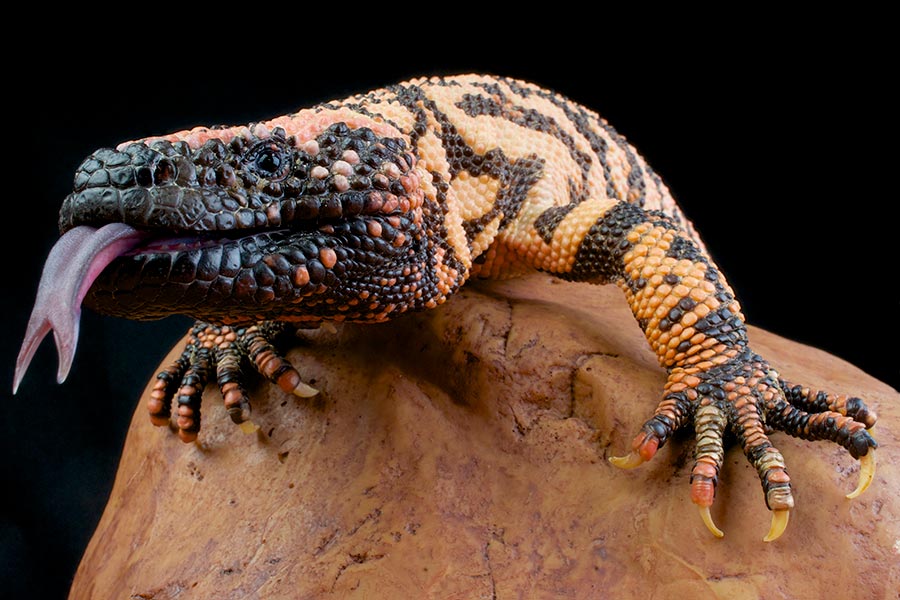≡
Dickcissel
Spiza americana
NatureServe conservation status
Global (G-rank): G5
State (S-rank): SNA
External links
Species range
BREEDING: eastern Montana and southern Saskatchewan east across Great Lakes region to southern Ontario and central New York, south to northeastern Wyoming, eastern Colorado, southern Texas, central Alabama, and South Carolina; formerly in Atlantic lowlands from Massachusetts to North Carolina (AOU 1998). NON-BREEDING: from Nayarit south through Central America to South America; mostly from Panama to Guianas and northern Brazil; Colombia and Venezuela and in much smaller numbers in Guianas and extreme northern Brazil, sometimes Trinidad (Ridgely and Tudor 1989), locally in Atlantic and Gulf lowlands of U.S. (AOU 1998). Predominant wintering area is the llanos of Venezuela in the states of Portuguesa, Cojedes, and Guarico (Basili and Temple 1999).
Migration
Arrives in breeding areas April-May (Terres 1980). Migration in Costa Rica occurs early September-late October and early April to mid-May (Stiles and Skutch 1989). Arrives in Colombia by mid-September, departs by early May (Hilty and Brown 1986); present in South America mostly October-April (Ridgely and Tudor 1989).
Habitat
BREEDING: Grassland, meadows, savanna, cultivated lands, brushy fields (AOU 1998). Nests on ground in grass or rank herbage, or raised a little above ground, in grass tufts or tall weeds, or in low shrubs or trees, up to about 2 meters above ground but usually low (Harrison 1978). Prefer habitat with dense, moderate to tall vegetation (particularly with some forbs) and moderately deep litter (Gross 1921, 1968; Harmeson 1972, 1974; Wiens 1973; Harrison 1974; Petersen 1978; Rotenberry and Wiens 1980; Roth 1980; Finck 1983, 1984; Skinner et al. 1984; Kahl et al. 1985; Frawley 1989; Sample 1989; Delisle and Savidge 1997; Winter 1998). Suitable habitats are found in oldfields, hayfields, fencerows, hedgerows, road rights-of-way, planted cover (e.g., Conservation Reserve Program [CRP] fields and dense nesting cover), and moderately grazed and idle prairie (Gross 1921, 1968; Taber 1947; Sauer 1953; Ely 1957; Hergenrader 1962; Graber and Graber 1963; Meanley 1963; Emlen and Wiens 1965; Blankespoor 1970; Berry 1971; Harmeson 1972, 1974; Harrison 1974; Stewart 1975; Sealy 1976; Petersen 1978; Rotenberry and Wiens 1980; Roth 1980; Faanes 1981; Finck 1983, 1984; Renken 1983; Skinner et al. 1984; Kahl et al. 1985; Basore et al. 1986; Sample 1989; Camp and Best 1993; Johnson and Schwartz 1993; Steigman 1993; Faanes and Lingle 1995; Johnson and Igl 1995; King and Savidge 1995; Hull et al. 1996; Best et al. 1997; Delisle and Savidge 1997; Winter 1998; W. E. Jensen, Emporia State University, Emporia, Kansas, pers.comm.). A high abundance of forbs provides perches, nesting cover, nest support, and possibly increased invertebrate abundance (Blankespoor 1970; Zimmerman 1971; Harmeson 1972, 1974; Birkenholz 1973; Skinner et al. 1984; Frawley and Best 1991; Klute 1994; Patterson 1994; Patterson and Best 1996; Winter 1998). In southwestern Missouri, Skinner et al. (1984) found Dickcissels in medium to tall grasslands with many tall forbs, conditions that were found in moderately grazed to idle cover. Skinner (1974, 1975) reported that densities in northwestern Missouri were highest with moderate amounts of forbs, and were lower when forbs were either very scarce or very abundant. In southwestern Missouri tallgrass prairie fragments, density increased with vegetation height (Winter 1998). In Kansas, densities were higher in oldfields compared with prairie (Petersen 1978; Finck 1983, 1984). Fence posts, small trees, and tall forbs are commonly used as song perches (Laubach 1984, Kahl et al. 1985). Nests are elevated in grasses, forbs, shrubs, or trees, and less commonly on the ground in thick vegetation (Gross 1921; Overmire 1962, 1963; Meanley 1963; Zimmerman 1966; Blankespoor 1970; Fretwell 1977; Frawley 1989; Winter 1998). Nest heights range from 0 to 2 meters (Taber 1947, Ely 1957, Meanley 1963, Von Steen 1965, Gross 1968, Berry 1971, Roth 1980, Laubach 1984, Winter 1998). In Kansas, the majority of nests were in forbs (Zimmerman 1966, Blankespoor 1970), followed by isolated American elm (ULMUS AMERICANA) saplings, thistle (CIRSIUM SP.), and grass (Blankespoor 1970). In tallgrass pasture in Kansas, most nests were adjacent to patches of dogwood (CORNUS) (Fleischer 1986). In Oklahoma, nested on the ground and in greenbrier (SMILAX BONA-NOX) thickets within oldfields; nest heights in an oldfield ranged from 3 to 60 centimeters (Ely 1957, Berry 1971). Ground nests were more successful than elevated nests in Oklahoma; as the season progressed, however, nests were built higher above the ground (Overmire 1963). In Nebraska, nests averaged 34 centimeters high in alfalfa (MEDICAGO SATIVA) and wild rose (ROSA SP.) (Von Steen 1965). In an Illinois oldfield, nested in live forbs and dead vegetation; most nests were in wild aster (ASTER PILOSUS), but nests in dead vegetation were more productive (Harmeson 1972, 1974). Nests in trees or hedges in Illinois were 0.6-1.8 meters high (Gross 1968). In Missouri, most nests were found in individual forb plants; nests were occasionally placed above the ground in clumps of grass or in shrubs (Sauer 1953, Skinner et al. 1984, Winter 1998). In Iowa placed nests in forbs, grasses, shrubs, and deciduous tree saplings (Best et al. 1981). Nests in Texas were associated with woody plants and were surrounded by dense grass or forbs (Roth 1980). Within tallgrass prairie in Texas, nests were located most often in green milkweed (ASCLEPIAS VIRIDIFLORA), sensitive briar (SCHRANKIA ROEMERIANA), and eastern gammagrass (TRIPSACUM DACTYLOIDES) (Steigman 1993). Hayland is used more frequently for nesting than cropland (Gross 1968, Faanes and Lingle 1995). In Nebraska, hayland was commonly used for nesting, with fewer nests found in wet prairie, wetland, upland prairie, lowland forest, or cropland (Von Steen 1965, Faanes and Lingle 1995). Ducey and Miller (1980) found unsuccessful nests in alfalfa (nest loss was caused by mowing) and oat fields (unknown cause of nest loss) in Nebraska. In Illinois, hayland was preferred for nesting, whereas no nests were found in pasture or cropland (Gross 1968). In Wisconsin also commonly nested in hayfields (Taber 1947). Occasionally nest in strip cover such as roadside ditches, fencerows, and grassed waterways (Gross 1921; Meanley 1963; Basore et al. 1986; Bryan and Best 1991, 1994; Camp and Best 1994; Warner 1994). In Illinois, nested in wider tracts of strip cover, such as waterways (7-28 meters wide) as opposed to fencerows (1-3 meters wide) (Warner 1994). Nests were found in grassed waterways in Iowa (Bryan and Best 1991, 1994) and road rights-of-way in Nebraska (Hergenrader 1962) that were planted to smooth BROME (BROMUS INERMIS). In Iowa, preferred nesting in strip cover over tilled or untilled (idle in fall and spring and containing year-round crop residue) cropland (Basore et al. 1986). The probability of occurrence was significantly greater in Iowa grassed waterways that had greater forb cover than those with lesser forb cover (Bryan and Best 1994). In Arkansas, densities were higher in brushy roadside borders than in open fields (Meanley 1963). Nests in road rights-of-way or other edge habitats, however, can experience high rates of depredation (Basore et al. 1986, Camp and Best 1994). In portions of Colorado, Kansas, Montana, Nebraska, Oklahoma, South Dakota, Texas, Wisconsin, and Wyoming, abundance was related positively to percent grass cover, percent litter cover, vegetation density, vegetation height, and litter depth (Rotenberry and Wiens 1980). In Iowa, abundance was related negatively to tree species richness, density, and size, as well as sapling density and the horizontal patchiness of trees (Best et al. 1981). In Nebraska, abundance was related positively to litter depth, vertical density, and percent forb cover (Delisle and Savidge 1997). In a Michigan alfalfa field, occupied areas of low plant diversity; low vegetation density at a height of 5 centimeters; and high litter cover, vegetation height, and vertical density of vegetation (Harrison 1974). NON-BREEDING: A variety of open habitats, second growth, and scrub (AOU 1998). Often in rice-growing regions in winter (Ehrlich et al. 1992). Prefers to roost in sugarcane (SACCHARUM spp.) fields, but if not available, will utilize bamboo, cattail marshes, grasses, and shrubs (Basili and Temple 1999).
Food habits
Eats weed seeds, grain, insects, and spiders; mainly grain and seeds in winter; forages on ground (Terres 1980) or picks seeds off seedheads (Stiles and Skutch 1989). Young nestlings are fed insects. Predominant items in diet during non-breeding season in Venezuela were rice, sorghum, and three species of wild grasses (ROTTOBOELLIA COCHINCHINENSIS, ORIZYA LATIFOLIA, ISCHAEMUM RUGOSUM) (Basili and Temple 1999).
Ecology
Mean territory size on breeding ground in tallgrass prairie in Kansas ranged from 0.45 to 0.57 hectares, whereas the mean territory size in oldfields ranged from 0.15 to 0.95 hectares (Zimmerman 1966; Schartz 1969; Petersen 1978; Finck 1983, 1984). The mean territory size in an Illinois oldfield ranged from 0.38 to 0.54 hectares (Harmeson 1972, 1974). The mean territory sizes in ungrazed and grazed tallgrass prairie in Oklahoma were 0.25 hectares and 0.47 hectares, respectively (Overmire 1963). Larger territory sizes of 1.4 hectares and 1.5 hectares were reported for tallgrass prairie in Iowa and tallgrass pasture in Oklahoma, respectively (Wiens 1971, Laubach 1984). In Kansas, males commonly returned to the same breeding area in successive years (Zimmerman and Finck 1989). In northern winter, occurs in small groups or concentrated in dense flocks of 100s or 1000s (Hilty and Brown 1986) or up to 3 million in agricultural areas of Venezuelan llanos (Basili and Temple 1999).
Reproductive characteristics
Clutch size is 3-5 (usually 4). Typically produces two broods per year. Incubation lasts 11-13 days, by female. Young are tended by female, leave nest at 7-10 days, unable to fly until 11-12 days.
Threats or limiting factors
Primary cause of mortality apparently poisoning of roosting birds in Venezuela by aerial or ground application of parathion and other pesticides during non-breeding season (Basili and Temple 1999). Local breeding populations are threatened by loss of nests and nestlings when fields are mowed. NON-BREEDING SEASON: Night roosts have been sprayed with organophosphates to kill dickcissels which are considered a pest species especially by rice and sorghum farmers (Basili and Temple 1995). Some roosts may contain up to 3 million birds and, if targeted, could significantly reduce numbers. HABITAT: Local populations are threatened by loss of nests and nestlings when fields are mowed. Not considered area sensitive, however (Herkert 1994, Swanson 1996). PARASITISM: Brood parasitism by the Brown-headed Cowbird (MOLOTHRUS ATER) occurs at variable rates (Taber 1947, Hergenrader 1962, Overmire 1962, Friedmann et al. 1977, Fleischer 1986, Klute 1994) but, if present, can lower productivity (Overmire 1963; Wiens 1963; Zimmerman 1982, 1983; Schartz 1969; Elliott 1976; Fretwell 1977; Winter 1998). When comparing brood parasitism rates in the central Great Plains, Basili (1997) found significantly higher brood parasitism rates in Kansas and Nebraska and significantly lower rates in Texas. Rates of brood parasitism varied from 2.8% of 143 nests in Texas (Steigman 1993) to 94.7% of 19 nests in northeastern Kansas (Elliott 1976). This variation in the rate of brood parasitism was related to the variation in cowbird density in different areas of the central Great Plains (Basili 1997). Brood parasitism by cowbirds can be nest density dependent; areas with low nesting densities of Dickcissels, such as tallgrass prairies, can experience higher intensities and frequencies of parasitism than areas with high nesting densities, such as oldfields (Fretwell 1977; Zimmerman 1982, 1983). However, Fleischer (1986) found that rates of brood parasitism in Kansas were not related to Dickcissel nest density, but were related to nest height. Parasitized nests were placed significantly higher (mean of 0.65 meters) above the ground than unparasitized nests (mean of 0.34 meters). Fretwell (1972) observed that higher rates of brood parasitism occurred when nests were placed near Red-winged Blackbird (AGELAIUS PHOENICEUS) nests. In Illinois, nests located within 50 meters of woody edges or other tall (more than 2 meters), woody vegetation were more than twice as likely to be parasitized as nests more than 50 meters from woody vegetation (J.R. Herkert and S.K. Robinson, unpubl. data). In southwestern Missouri, the frequency of parasitism increased significantly with proximity to shrubby edges; frequency of brood parasitism was highest less than 50 meters from a shrubby edge (Winter 1998). However, in Kansas, significantly higher brood parasitism rates were not found for nests less than 100 meters from wooded edges (Jensen, pers. comm.). In Missouri tallgrass prairie fragments, the rate of brood parasitism was not related to fragment size (Winter 1998). PREDATION: Known predators in winter in Venezuela include: Merlin (FALCO COLUMBARIUS), Aplomado Falcon (F. FEMORALIS), Peregrine Falcon (F. PEREGRINUS), Bat Falcon (F. RUFIGULARIS), American Kestrel (F. SPARVERIUS), Pearl Kite (GAMPSONYX SWANSONII), White-tailed Kite (ELANUS CAERULEUS), Roadside Hawk (BUTEO MAGNIROSTRIS), Short-tailed Hawk (B. BRACHYURUS), Gray Hawk (ASTURINA NITIDA), Harris's Hawk (PARABUTEO UNICINCTUS), Long-winged Harrier (CIRCUS BUFFONI), Barn Owl (TYTO ALBA), Short-eared Owl (ASIO FLAMMEUS), jaguarundi (FELIS YAGOUAROUNDI), huron (GALICTIS VITTATA), and tayra (EIRA BARBARA) (Basili and Temple 1999). PESTICIDES: In wheat fields treated with a mixture of toxaphene and methyl parathion in southeastern Missouri, Dickcissels showed high levels of cholinesterase inhibition activity in their brains. However, no dead or abnormally behaving birds were observed (Niethammer and Baskett 1983). HUNTING: Commonly hunted across winter range for food and pest control. Methods include slingshots, throwing sticks, clubbing, and shooting (Basili and Temple 1999).









